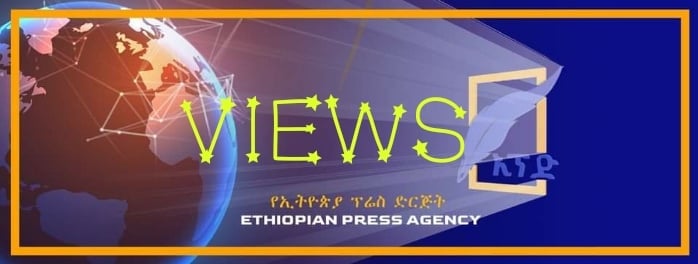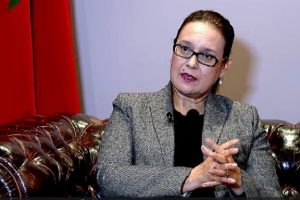
BY GETACHEW MINAS
Foreign exchange availability, money supply, depreciation in the official exchange rate, export tax and intensification of exchange control are the main determinants of the parallel foreign exchange market. Studies show that the official foreign exchange buying rates have been lower than the rates in the parallel market. This practice was experienced by many developing countries, including Ethiopia, for several decades beginning with the signing of the Bretton Woods Agreements by the developed countries in 1944.
The agreement led to a “fixed” exchange rate system. This system proved to be defective and in 1973 most of the major currencies began to be exchanged in “both” a market and a managed floating system. Regardless of this shift, however, the exchange rare systems in developing countries have been practiced with “both” exchange controls and parallel markets for their currencies.
These practices continued with both fixed and “floating” exchange rate systems. Studies had been conducted by the National Bank of Ethiopia (NBE) on the determinants of the parallel foreign exchange market with both fixed and floating rates. The studies had shown the effects of policies on the parallel foreign exchange market in Ethiopia. The parallel market for foreign exchange has been widely used to the extent of determining the domestic prices and official forex earnings of Ethiopia.
The incessant and uninterrupted depreciation of the Birr in the parallel market has contributed to inflation. Yet, the economic impact of this market had been ignored and research had not been seriously conducted on its effects in the past. The parallel market had been deeply inter-connected with enterprises and individuals that had been engaged in the informal sector of the economy.
The existence of the parallel foreign exchange market partially explains the “need” for controlling the illegal market. The engagement of some dealers in illicit forex dealings outside the official market indicates the need for ensuring a single foreign exchange market in Ethiopia. The parallel market for foreign exchange depends on the appreciated exchange rate of the Birr. It also implies social and economic costs.
The economic “costs” are reflected as inflation and loss of revenue to the government. The parallel market is accompanied by distortions in the allocation of resource to economic sectors. This market accommodates rent-seeking and weakens economic policy instruments. Here, the proper identification of the “causes” of the parallel market may contribute to the lowering of the economic costs.
Economists argue that in an economy “dominated” by government control of foreign exchange, the parallel foreign exchange markets serves as a means of competition. This encourages and promotes efficiency in the banking system. The parallel foreign exchange market is, therefore, a response to government intervention. The government may intervene with policies of financial control that “widen” the gap between interest rate on official credit and the rate in the parallel market.
It may also overvalue the official currency or Birr which results in the widening of the gap between the official and parallel foreign exchange market rates. The government may also intervene with tariffs and quotas that “influence” the prices of similar goods that are either legal or smuggled. This intervention further encourages the parallel market.
The major interventions that “stimulate” parallel market activities are taxes, regulations, prohibitions and bureaucratic corruptions. The first two are clearly linked to the emergence of parallel foreign exchange market. But “prohibitions” on drugs, guns, gambling and foreign currency can create only illegal market since by definition prohibition prevents the existence of official market for these items.
In other words, illegal unofficial market arises as a result of prohibitions. In developing countries, including Ethiopia, control in the official market is designed to protect the “depleted” foreign exchange reserves. This is assumed to avoid official exchange rate adjustment in the context of balance of payment pressures. If the costs of illegal foreign exchange transactions are rising, the demand for foreign exchange in the official market may also be high.
The parallel market “emerges” when a government attempts to establish the price at which a commodity or asset or service will be traded. Forex “control” systems are prime examples of the conditions necessary for the existence and operation of parallel markets. The parallel markets are common responses to shortage; they are a means of expressing excess demand. Incentives are created to acquire foreign exchange through illegal channels in order to buy scarce imported goods.
Smuggling, under and over-invoicing of exports and imports, and remittance of foreign exchange through the parallel market are the main channels for illegal foreign exchange acquisitions. Studies have shown that there are ways in which parallel foreign exchange market emerges and develops.
Parallel market “emerges” gradually in response to efforts to maintain an overvalued exchange rate. The rate accompanied by foreign exchange controls, which are the characteristics of many developing countries, gives rise to parallel foreign exchange market.
The economy may face a gradual worsening of the balance of payments as a result of expensive monetary and fiscal policies, which lead to severe inflation and overvaluation of the official exchange rate. The failure of the government to correct the imbalance through tightening of macroeconomic policies or devaluation of the official rate would support the rise of the demand for foreign exchange in the parallel market. This forces the government to put “restrictions” on the private sector’s access to foreign exchange at the official rate.
A parallel foreign exchange market may emerge when the monetary authority purposefully splits the foreign exchange market with devaluation at the time of balance of payment crisis. This is done on a temporary basis to limit the inflationary effect of devaluation at the time of balance of payment crisis. When countries, including Ethiopia, face this situation, the monetary authority creates a dual exchange rate system where different rates are used for “essential imports” and “non-essential imports”.
The rationale for this system is to protect foreign exchange reserves from capital outflows, which results in the depreciation of the parallel rate rather than in a loss of official reserves. The dual rate system is also claimed to help limit the impact of capital outflows on domestic prices since transactions are affected by the official exchange rate.
The debt and balance of payments crises have led countries to adopt a dual exchange rate system. This was introduced to move towards a unified, market determined official exchange rate. It was designed to reduce the significance of illegal markets. Generally, studies show that a parallel foreign currency market can “only” develop if the legal maximum rate is below the free market price.
As a result, the foreign currency at the low legal price is more demanded than will be supplied. Therefore, as the definitions of parallel and official market vary, it is useful to review the meaning of these terms. In the “official” foreign exchange market trading is authorized by commercial banks in compliance with the official foreign exchange rules and regulations set by the monetary authority.
In the parallel market trading is conducted by unauthorized or unlicensed individuals and institutions, in which there is no compliance with the official foreign exchange rules and regulations set by the monetary authority. The parallel market, therefore, includes all private traders who operate without official licensing to do business in foreign exchange as well as those private firms or institutions which are licensed to operate as part of legal trading institutions but which at the “same time” are involved in the illegal parallel foreign exchange trade.
It is agreed that the parallel markets “emerge” when a government attempts to establish the price at which an asset will be traded. When potential traders are legally “prohibited” from exchanging at higher than official rate, they usually set below the market-clearing rate. This creates shortage of foreign exchange. Thus, the resulting excess demand leads to the highest price to those sellers willing to trade at a rate above the official rate.
The term “black market for foreign exchange” which is usually used by many economists to distinguish the official foreign exchange market from parallel market, is “not” synonyms with the parallel market. The “black” market covers markets for prohibited goods such as narcotics, cocaine etc. for which no legal market exists in the economy. Black markets are markets, which are illegal, and detection results in heavy penalties. So the illegal market which has “no” alternative official market is not considered as parallel market. According to this definition, parallel markets include illegal trade, but in most cases, only in legal goods and assets. Therefore, the term “parallel” market is used instead of “black” to represent the unofficial foreign exchange market.
Some economists think that the parallel foreign exchange market rate is a price upon which economic agents rely in making economic decisions about resource allocation. But the question is to know which rate (official or parallel) fully reflects the reality for appropriate decision making. In highly managed and “fixed” exchange rate regime, the official rate may not be explained by basic economics. It is, therefore, argued that this rate hardly reflects constantly changing economic and social developments. Actually, some economists claimed that existence of parallel market itself proves the inappropriateness of the “official” exchange rate. It gives misleading signals to economic agents in their decisions of resource allocations. Thus, it seems that parallel market rate is a “better” guide for resource allocation than official rates.
A parallel market may also exist to finance legally prohibited goods and services without the presence of any controls. It is argued that the behavior of parallel market in foreign exchange is consistent with efficient market. In an efficient market, prices “reflect” all available information on economic performance. Asset and commodity markets are efficient if the observed price is able to direct economic agents towards an efficient allocation of resources.
Since the current price incorporates all the current information and past information, the only factors that may change the future course of the current price are events that are unknown at the present time. This indicates that the change in price on an efficient market occurs randomly. Thus, the price of an asset at any time in the future can be higher or lower than the current price. Due to the random nature of price development in an efficient market, the current price may help predict the future price.
Editor’s Note: The views entertained in this article do not necessarily reflect the stance of The Ethiopian Herald
The Ethiopian Herald July 23/2022



